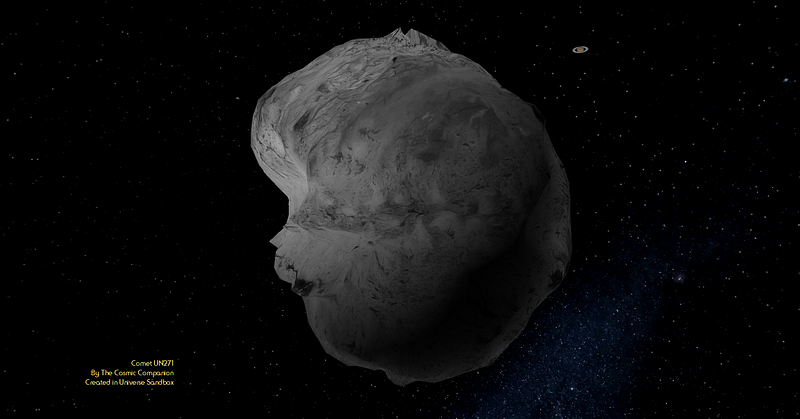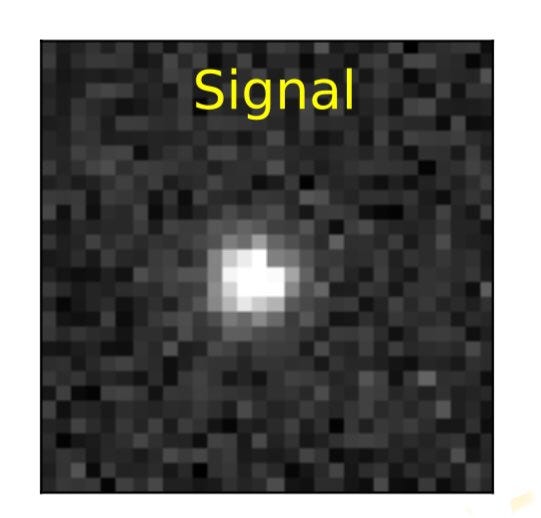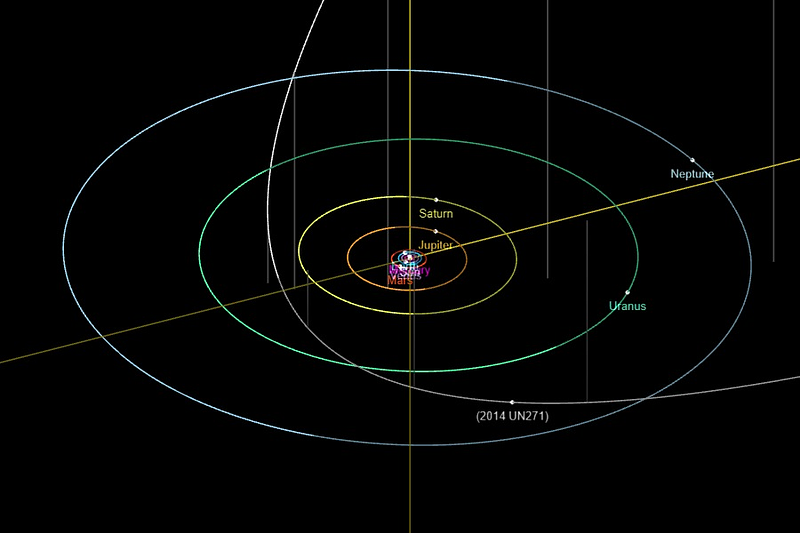Approaching Behemoth: Comet UN271 to Pass Through Inner Solar System
Written on
The Journey of Comet UN271
A colossal comet known as UN271, located over four billion kilometers from the Sun, is on a fast track toward the inner solar system. This is no ordinary comet.

In 2031, this enormous comet will make a rare approach to the Sun (though perhaps not as close as one might hope). Currently situated three billion kilometers from the Sun, this gigantic "dirty snowball" is gradually gaining speed as it moves toward the heart of the Solar System. During its journey, it will heat up, shedding gas and dust to create a tail. A significant cosmic event is indeed on the horizon.
In just a decade, this icy giant will reach its closest point to the Sun. While many may anticipate a spectacular display, it seems that this frozen object won't come close enough to the Sun to create a stunning sight. Nevertheless, this encounter with a Trans-Neptunian Object (TNO) offers astronomers a valuable opportunity to study a body from the far reaches of our Solar System.
Comets often defy prediction, and the emergence of this new celestial body raises numerous questions.
First Sightings and Challenges
Initially observed in data from the Dark Energy Survey (DES) back in 2014, this distant visitor has only recently been recognized and verified.

“Some have wondered why it was only announced recently: locating TNOs using DES involves extensive computation (my PhD focused on solving this issue). The search consumed about 15 to 20 million CPU hours, and cataloging from our 80,000 exposures likely required even more!” Dr. Pedro Bernardinelli shared on Twitter.
Measurements indicate that UN271 may span between 100 and 370 kilometers (62 to 230 miles) in width. The uncertainty in size arises from the fact that astronomers are unsure how much material is being lost due to solar heating.
“We assume we’re measuring the brightness of the object without any influence from a dust coma. If there is a coma, it will be smaller than we estimate. For context, 67P is about 4 km wide, making UN271 significantly larger. Comet Hale–Bopp had a diameter of approximately 60 km,” tweeted planetary scientist Meg Schwamb from Queen’s University Belfast.
The precise composition of UN271 remains a mystery, but comets are generally "dirty snowballs" composed of ices, dust, and small rock and metal fragments. Its shape is also uncertain; however, it’s not massive enough to be spherical, suggesting it likely has an irregular form.
At its most distant point, UN271 resides in the Oort Cloud, a hazy region filled with icy, rocky bodies that give rise to long-period comets. The elongated orbit of UN271 brings this celestial giant into the inner Solar System just once every 612,190 years. The last time UN271 approached Earth, ancestors of modern humans and Neandertals may have witnessed this rare visitor.
The Historical Context of Comets
On a Monday morning in August 1729, Father Nicolas Sarabat, a mathematics professor, spotted a fuzzy object in the sky over France. Unsure if it was a comet or a dim patch of the Milky Way, Sarabat decided to investigate further. Unfortunately, moonlight interfered with his observations.
Once the Moon's phases allowed for clearer viewing, Sarabat, without a telescope, noted the object's movement. This body, now recognized as Sarabat’s Comet, is considered the largest comet documented in modern history, possibly measuring 100 km (63 miles) in diameter.
“Considering its absolute magnitude and the exceptionally red appearance it exhibited in 2014… I would estimate its diameter to be between 130 and 370 kilometers (averaging 160), making it comparable to or even larger than Sarabat’s massive comet C/1729 P1, likely the largest known Oort Cloud object,” citizen astronomer Sam Deen commented on the Minor Planet Mailing List.
However, this icy traveler from the distant Solar System never ventured closer than Jupiter's orbit, resulting in less than spectacular views from Earth.
The Path of UN271

Currently, UN271 is slightly over 20 astronomical units (AUs, the distance between the Earth and the Sun) away from the Solar System's center. Over the past seven years, this massive comet has traversed more than seven AUs along its eccentric orbit.
“Recent observations from Las Cumbres Observatory using the 1-meter Sutherland-LCOGT C telescope indicate that the newly identified 2014 UN271 exhibits cometary activity at a heliocentric distance of 20.18 AUs,” researchers reported in the Astronomer’s Telegram.
At its closest approach on January 21, 2031, UN271 will be located 10.9 AUs from the Sun, slightly beyond the orbit of Saturn—farther away than Sarabat’s Comet. In these cooler regions, comets are not heated as intensely as those that come closer to the Sun.
Thus, although UN271 will likely develop a distinctive tail as its icy surface warms, it is improbable that it will exhibit the kind of striking tail one might expect from a comet approaching its parent star.
Initial projections suggest that UN271 might not even be visible to the naked eye from Earth—at its brightest, it could be as dim as the dwarf planet Pluto, or perhaps even fainter.
Yet, amateur astronomers will likely find joy in images captured of this body through telescopes and spacecraft.
The Significance of UN271's Approach
Perhaps the most crucial aspect of UN271's approach is that it offers astronomers a unique chance to investigate a rare visitor from the Oort Cloud—a poorly understood region housing ancient relics from the early Solar System. This massive comet will allow researchers an up-close examination of the dynamics among the most distant objects in our Solar System.
Enjoy the visuals of UN271 while you can—you'll have to wait an astonishing 60,000 centuries for another spectacle like this.
The first video discusses the significance of Comet UN271, which is en route to the inner Solar System, and its potential implications for future observations.
The second video covers NASA's warnings regarding the gigantic comet's approach and what it might mean for Earth in 2031.